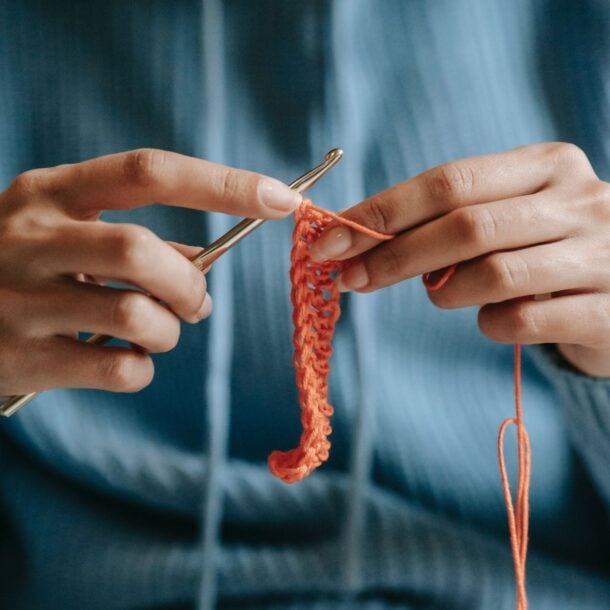Read our most Frequently Asked Questions!
Read our most Frequently Asked Questions!

Limitless Crochet everyday
With crochet, the possibilities are endless. Throughout 2021, Limitless Crochet Everyday will teach you how to become a better crocheter with new techniques, stitches, and free patterns to go along with them. Crochet is an anxiety reducer for many of us and after a long and stressful 2020 year, I think this is exactly what we need.
Some of the links below are affiliate links. Please see my disclaimer for details.
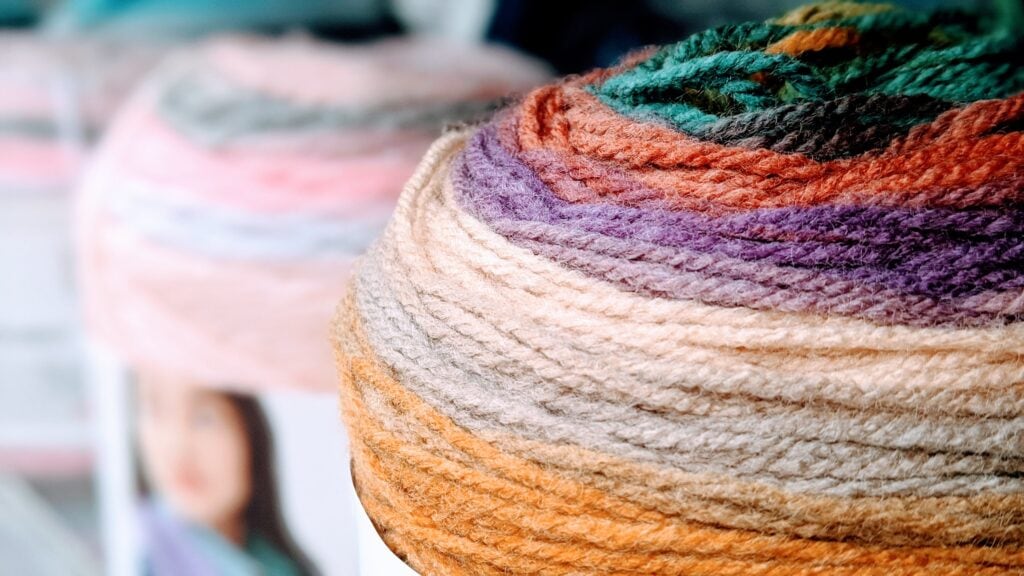
- WEEK 3 -
“Oh dear… I’ve run out of places to hide, I mean store my yarn.“
Welcome to Week 3 of the Limitless Crochet Everyday project! This week we’re learning all about this amazing thing called yarn. There are so many kinds of yarn to choose from and I want to help you choose the best yarn for you.
If you missed last weeks topic, it was all about the must-have tools that will help you get started with crochet on the right foot. We talked about how to set yourself up for success, answered some of your most frequently asked questions about hooks, and ended with another roundup of free crochet patterns – this time using the double crochet stitch.
READ LAST WEEK’S EMAIL HERE
January Theme:
GETTING STARTED
Week 3: All About Yarn
January 17 - 23
Let’s talk all about yarn. Oh, the possibilities! There are different fibers, weights, textures, and patterns to make with them. But before you can start using them, it’s best to know how to understand them.
All About Yarn – The Rundown
Buying yarn is the best part about crochet. If you’re not already, you will soon become a yarn hoarder like me 💁🏻♀️
I’ve dedicated this week just for yarn because there are so many things to learn about it! There are different weights, fibers, and colors. It’s easy to get lost in it all.
But today I’m going to tell you all about it and how to choose the best yarn for you.
Below I’m going to tell you the basics behind yarn, but if you’d like to read the full article, you can find it here.
Yarn Names
The first thing we’ll talk about is the different names you will hear when referring to yarn: Ball, skein, or hank.
Here are the differences.
A ball could be yarn wound up into an actual ball or it can just refer to any yarn you have in your stash.
A skein is yarn wrapped in a label from your local craft store.
A hank looks completely different. Small local yarn shops and hand-dyed yarn purchased online are usually sold in hanks. When you purchase a hank, you’ll need to wind it up into a ball before you use it.
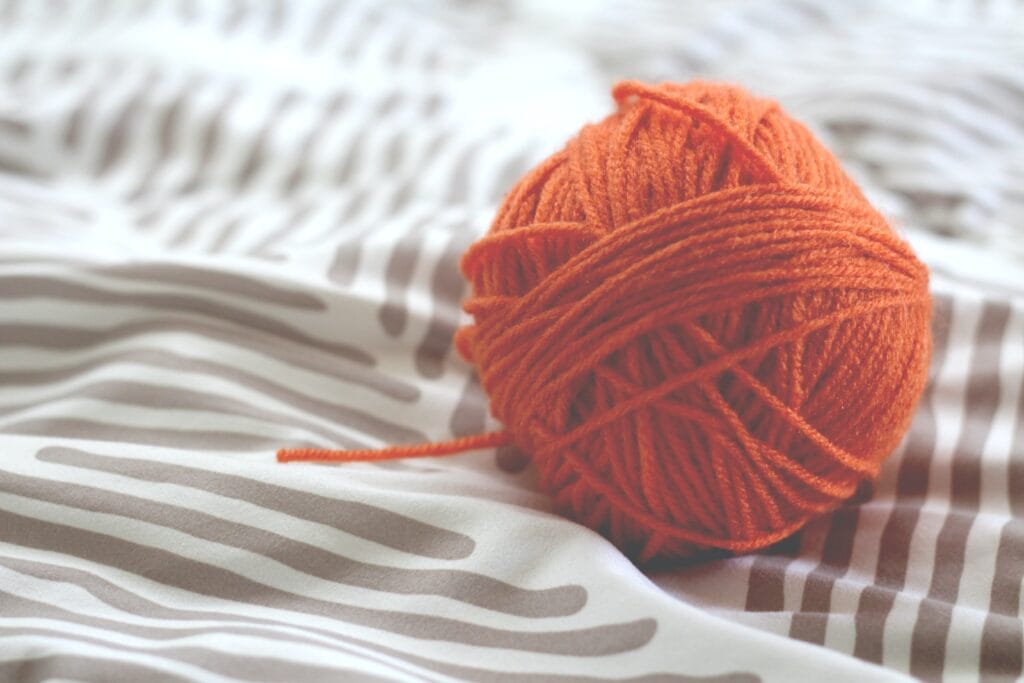
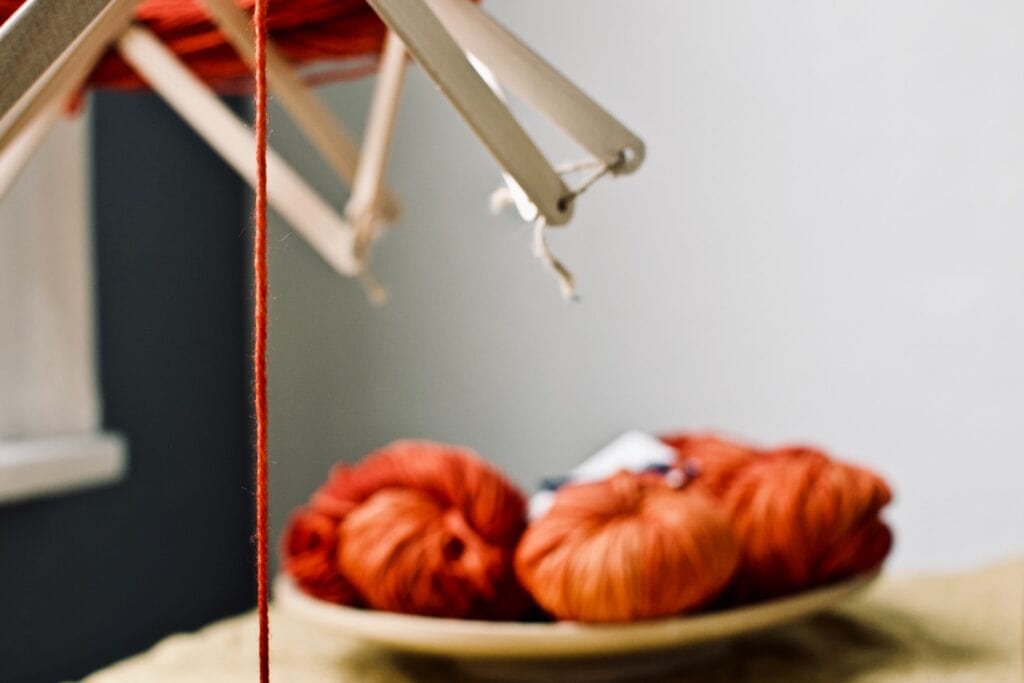
Yarn Weight
Now onto a yarn’s weight. This doesn’t mean how much the skein actually weighs (this type of weight goes by grams & ounces). When a pattern talks about the yarn’s weight, it’s referring to the thickness of the yarn.
There are 7 weight classifications:
- 0 – Lace
- 1 – Super fine
- 2 – Fine
- 3 – Lightweight (sometimes called DK)
- 4 – Medium (also called worsted or aran – see below)
- 5 – Bulky
- 6 – Super bulky
- 7 – Jumbo
The only difference with aran is that it means it’s a little heavier than worsted weight, but it’s generally the same thickness.
For beginners, I always suggest using medium weight yarn because it is the easiest to work with and is the most common. Although bulky is also great because you can really see your stitches and they make for some quick gifts!
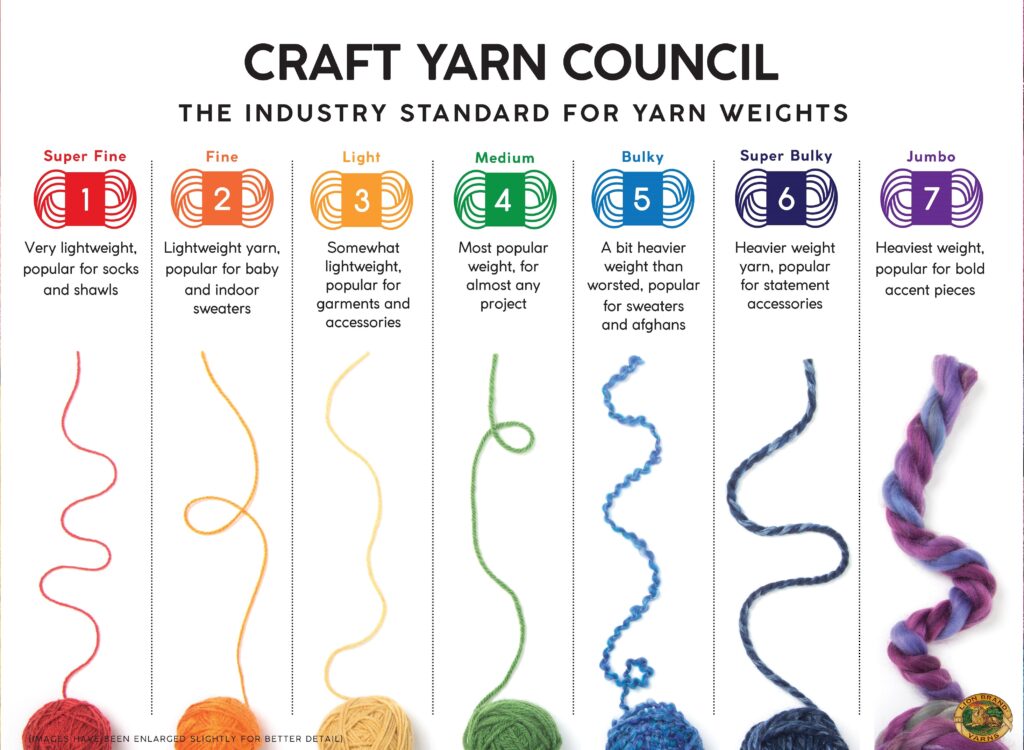
Yarn Fibers
A yarn’s fiber content is what the yarn is made of and there are a variety of types out there. Generally, it can be divided into 3 categories:
- – Natural
- – Synthetic
- – Blended
Acrylic, cotton, and wool are the most common types of fiber content but there are many more.
Wool is great to use for winter items such as scarves, hats, and mittens because it keeps you nice and warm.
Cotton feels lighter and is great for spring and summer garments, baby items, washcloths, and other home decor!
Acrylic yarn is the most versatile. It’s great for so many projects from blankets to garments to home decor and more. Acrylic yarn is easy to wash, inexpensive, and holds up well when using it daily.
To find out more about the different kinds of fibers, read this post.
Yarn Flaws
How do you feel when you come across a knot in the ball of yarn you’re working with? Some people don’t mind while others can’t stand it. So let’s talk about why these knots exist. Here’s what Skein Knot has to say:
“Yarn is essentially a piece of string that, during the milling process, sometimes breaks. The mill isn’t going to throw away good yarn because of a single breakage. So, what they do is tie the yarn together with a knot and the process carries on. Now, unless a yarn company or dyer inspects every millimetre of each skein looking for knots (and let’s face it, who has time for that!) nobody is going to know a knot is there until someone discovers it while knitting.”
This article goes on to talk about different techniques on cutting out the yarn and joining it back together. If you’re interested in that, you can read more on their website here.
**Spoiler alert: During Week 6 we’ll talk about all of these techniques in depth 😊**
Where to buy
You can buy yarn online or at a local craft store.
There are smaller yarn shops that support small businesses and there are bigger stores like Michaels, Joann, and Hobby Lobby where you can find a lot more than just yarn.
A lot of people prefer shopping in person because you can see and feel the yarn to make sure it’s to your liking. But once you’ve purchased the same yarn a few times (or if you’re feeling uncomfortable about going out during these times) there are quite a few place you can order yarn online.
Some of my favorite places are Amazon, LoveCrafts, Yarnspirations, & Lion Brand Yarn. There are more, but these are the places where I frequently shop.
If you want to start ordering online, here are some of my favorite brands:
- – Bernat Super Value (medium weight #4)
- – Lion Brand Color Made Easy (bulky weight #5)
- – Hobby Lobby’s I Love This Yarn (found only at Hobby Lobby – medium weight #4)
- – Caron Simply Soft (medium weight #4)
- – Bernat Blanket (super bulky weight #6)
- – Red Heart Super Saver (medium weight #4)
- – Paintbox Yarn (found only at Lovecrafts – all different weights)
Yarn FAQs
A few weeks ago I asked you in the Crochet’dy Bunch // Limitless Crochet Everyday Facebook group if you had any questions about yarn. Today I’m going to take the time to answer some of those questions.
Q1: Are there any techniques to reduce yarn splitting?
Yarn splitting will depend on how the yarn is made. That’s where plies come into play. But what are plies?
Plies are the individual strands of yarn that are twisted together to form a plied yarn. 2-ply means two strands of yarn were used when twisting and creating the yarn. The same goes for 3-ply, 4-ply, and so on. The number of plies does not determine the thicknesss of the yarn.
Not all plies are created equal. Depending on the yarn or how you crochet, the plies can untwist and this can contribute to splitting yarn. Yarn splitting also happens when you crochet too tight.
One thing you can do is try a different type of hook. We talked about the different shapes of hooks last week – tapered and inline. Personally, I’ve noticed that my yarn splits more when I used an inline hook. That’s one of the reasons why I prefer tapered. But it could be different for you. Test it out and see what you find.
You can read more about reducing yarn splitting over on AllFreeCrochet & in this video
Q2: How do I calculate how much yarn I’ll need for a project?
My favorite place to go when I need to estimate how much yarn I will need for a certain project is the “How much yarn do I need…” page on the Lion Brand website. I use it all the time.
If you need something a little more specific, you’ll need to do a little work up front. To calculate how much yarn you’ll need, create a gauge swatch using the stitch that’s most used in the pattern. Then calculate your stitches per inch and multiply that by the number of stitches in the project.
Stacey from Shiny Happy World explains each step thoroughly in this post.
Q3: What type of yarn is better for specific projects?
Earlier I explained that when it comes to fiber, wool is great for items that are meant to keep you warm. Cotton is great for light garments or home decor. And acrylic is great for almost anything.
When it comes to weight, you can make anything you want with any weight yarn. But here’s a general list of what each weight can be good for:
- Supefine (1) – Socks, lace shawls/scarves, baby items
- Fine (2) – Baby garments
- Lightweight/DK (3) – Garments, baby items, blankets
- Medium/worsted (4) – Pretty much everything!
- Bulky (5) – Blankets/afghans, hats, scarves, sweaters
- Super Bulky (6) – Same as bulky
- Jumbo (7) – Bold accent pieces (arm knit blankets, floor poufs , rugs)
Q4: What is worsted weight?
Worsted weight yarn is medium weight yarn. It can also be called Aran. As I mentioned above, the only difference with aran is that it’s a little heavier than worsted weight, but it’s generally the same thickness.
Q5: Why do I have two skeins labeled #4 but one feels thicker?
When it comes to the weight classes, they’re measured by wraps per inch. So if you ever have a skein where you lost the label, you can figure out what weight it is with a pencil, a tape measure, and this article by LoveCrafts.
Just because yarn is in the same weight category doesn’t mean they’re all identical. Some feel lighter and some feel more dense. For example, Caron Simply Soft is a lighter medium weight yarn and Caron One Pound is a heavier medium weight yarn. You’ll start to notice the difference the more you experiment with different types of yarn.
Q6: What yarn is easier to work with? What yarn should I wait to try until I have a little more experience?
The best yarn for beginners is a light-colored, medium or bulky weight, acrylic yarn.
Acrylic yarn is great for beginners because it’s inexpensive, easy to find, and works well for many different types of projects.
Cotton yarn can also be a good choice, but I would stay away from the tougher cotton yarn in the beginning (like Lily Sugar ‘n Cream for example)
Novelty yarns are yarns that are fluffy or spun a different way. When you use these yarns it can be tough to see your stitches. Eventually you will grow to love working with these types of yarn, but if you’re just starting out I would steer clear of them.
If you’re ready to try the much-loved faux fur yarn, here are some tips for working with Go For Faux. Some of these tips will also work with other novelty yarns.
Q7: When stocking up on yarn, what types/sizes should you always have on hand?
If you’re asking this question, you’re about to join the yarn hoarding community 😜 Welcome aboard!
But on a serious note, it really depends on what you enjoy making! If you make nothing but amigurumi, having multiple colors of medium weight yarn will suit you best. If you find a project on a whim, it’ll be nice to already have the colors you need in your stash!
If garments are your thing, you will usually need multiple skeins of the same yarn type and color so you can stock up on that. Garments are most commonly made using lightweight or medium weight yarn.
If you enjoy making hats, scarves, blankets, or home decor, then medium/bulky weight, acrylic yarns are for you.
When in doubt, the most common weight and fiber is medium weight and acrylic. So go stock up on your favorite colors!
Q8: Do you have any hints or tips for selecting yarn for wearables?
If you’re making summer wearables like bikinis, tops, or dresses, a lightweight cotton yarn is your best bet. Cotton yarn is nice and airy and lightweight (#3) yarn won’t feel like it’s weighing you down.
If you’re making fall/winter wearables like cardigans or sweaters, a medium/bulky yarn would work best using acrylic or wool fibers (or a wool blend).
Acrylic works well for a lot of different items and it’s the easiest to wash. Wool is great if you’re wanting to keep nice and cozy.
Here’s some more tips on choosing the right yarn for summer garments.
Q9: What’s the best way to join a new skein of yarn when crocheting a garment?
In a few weeks we’re going to be talking about 5+ different ways to join yarn so keep an eye out!
But before we get to that, this tutorial will show you how to change color and join yarn at the end and in the middle of a row. This is how I’ve always done it with all types of projects.
Q10: How do I choose colors for a project that go well together and don’t clash?
I am not the person to talk to about choosing colors 😂 I wish I was good at this, but the reality is I am not. So I’m going to hand this question over to my friend, Naztazia. She has this great video on how to choose colors using a color wheel.
From someone who isn’t great with color matching on her own, I like to look for inspiration on Google and Pinterest. If I’m thinking about making a blanket with stripes, I’ll type in “blanket with stripes” just to see what kinds of colors go well together. I’ll also look up “color inspiration” and you will find a lot of beautiful color palettes.
Choosing & Substituting Yarn
There are a few things that go into choosing and substituting yarn. The first thing you should know is that there are some things you can substitute and some things you shouldn’t.
When substituting yarn, you should generally try to use the same weight and fiber. But there are a few exceptions.
If you found a super cute pattern for a simple chunky blanket, but you don’t have bulky yarn, you have two options.
First, it’s not a big deal to replicate it using another weight yarn. You’ll just have to figure out the stitch multiple, which is usually listed in the pattern, in order to make it the size you want it to be.
Second, if the original design uses a bulky or super bulky yarn, you can gather a few strands of a medium weight yarn until you match the same gauge or get close to it.
Did you know that you could work with multiple strands of yarn at the same time?
In the picture below, I used 3 strands of medium weight yarn on the right to achieve the same gauge as the bulky weight yarn on the left.
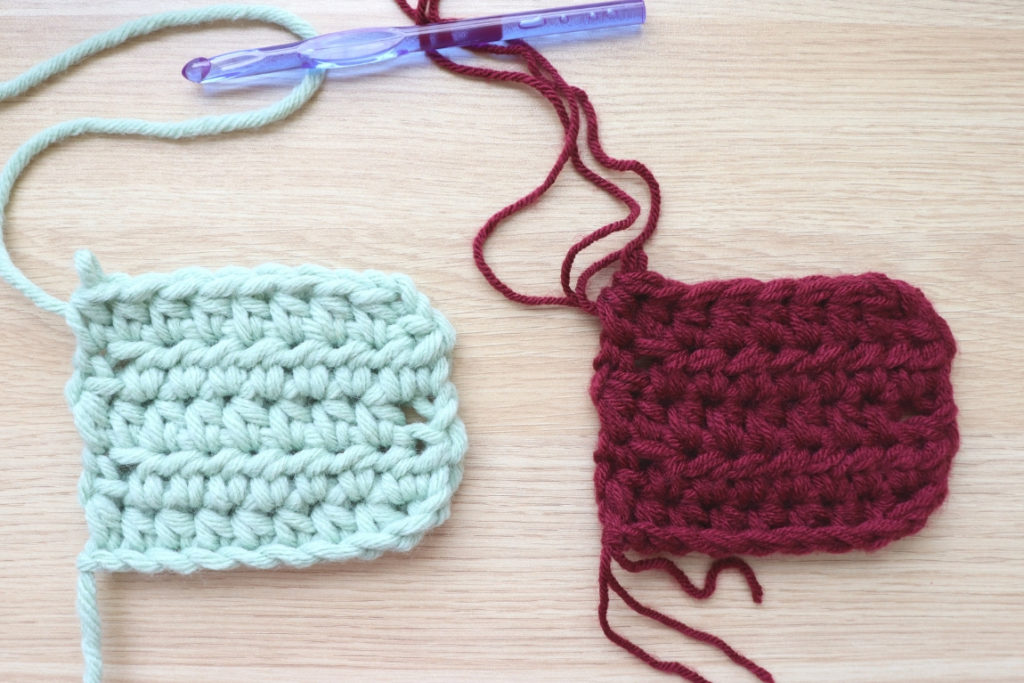
On the number side of things, here’s a really helpful way to substitute your yarn. I really like the graphic Mikey uses to explain how to do this so make sure you check that out.
FREE PATTERN FRIDAY
Okay so I am SUPER excited to share this.
By the request of many, I’ve finally created a video tutorial for one of my most popular patterns to date.
So this isn’t technically a new pattern, but it is loved by a lot of you and is a great accessory to have whether you’re making it for yourself or for a friend.
…Oh, I forgot to tell you the pattern!
It’s my Slouchy Crochet Leg Warmers!
Find the free pattern here
Get the ad-free PDF here
JOIN THE LCE FACEBOOK GROUP
The Crochet’dy Bunch // Limitless Crochet Everyday
I created the Facebook Group, The Crochet’dy Bunch as a space for those who love crochet and I’ve decided to group it together with the Limitless Crochet Everyday project. This is a place where we connect, share work, get your questions answered, and support each other. I hope you’ll join us!

Please don’t forget to agree to the group rules! It’s so important to me that this is a supportive, loving community, and I won’t tolerate any negativity.
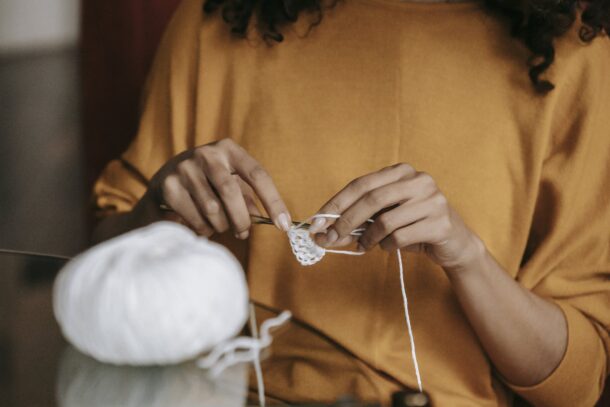
JOIN THE WEEKLY NEWSLETTER!
Sign up to learn how to crochet through your emotions and gain access to our private Facebook group where you can get answers to all of your questions!
